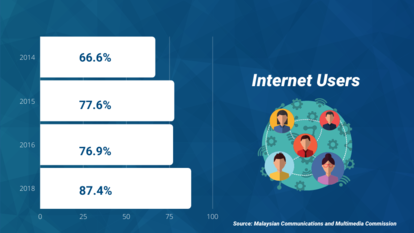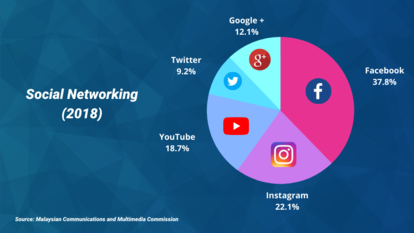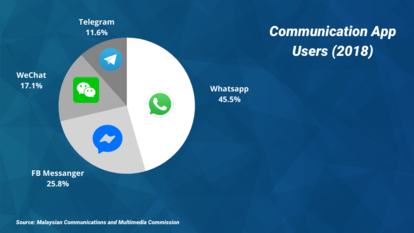#FreedomFightsFake
Spreading Fake News will turn you into Pinocchio

Have you ever heard about the term “infodemic”? The term that born when covid-19 is born, they like siblings walking side by side, but infodemic spread faster than his brother with the help of advance technology – “Social Media”. Click, Share, Tweet and Comment could spread the infodemic faster without any restriction.
“It’s my account so I have the freedom to share it” - freedom to share it doesn’t mean all of that information goes on the internet without filter it first. Check, verified before you share it.
With all this advanced technology especially we are in the middle of the pandemic, so much untrue information spreading all over the place, whatsapp group for example, many information has been jump from one phone to another one, and put the people on the grey area and at some point we don’t know who to trust anymore.
The term of Fake News conflates three notions “Dis-information, Mis-Information and Mal-Information”, according to Ethical Journal Network the definition is:
- Disinformation: Information that is false and deliberately created to harm a person, social group, organization or country.
- Mis-information: Information that is false, but not created with the intention of causing harm.
- Mal-information: Information that is based on reality, used to inflict harm on a person, organization or country
In Malaysia there is an increasing number each year of internet users according to Malaysian Communications and Multimedia Commission (MCMC) on 2018 the internet users reach 87.4% and could possibly grow higher in 2019 and 2020. On the social networking category, Facebook leading as number one users in Malaysia with 37.8% followed by Instagram with 22.1% based on survey in 2018. In terms of communication app users Whatsapp leading as first app with 45.5% and followed by FB Messenger with 25.8% based on survey 2018 and the most used device to access internet is smartphone with 93.1%.



survey above shows that most Malaysian spending their time more on the smartphone due to the convenience and easy to carry everywhere, which mean that any information could easily read and share through phone and could spread information 10x times faster whether it is true or false.
On 2018, Telekom Malaysia launched an aggressive outdoor campaign and targeting the youth who attempting to spread the fake news.
The message of the campaign has been put up on MRT billboards bearing the slogan ‘Sharing a lie makes you a liar’ with an image of young people on their phones with long Pinocchio- style nose. The campaign also include the slogan ‘Stop ‘Fitnah [rebellious] Internet’ and an accompanying hashtag #FITNET.

Even though the hashtag #FITNET sparked the bafflement in public because internet people think it is a fitness movement and it is a terrible choices for a hashtag campaign. But let put that aside, the point here is how this is a good step to remind people to “stop sharing fake news”, spreading fake news could turn you into a “Pinocchio”, and we don’t want that to happened right?
What action Malaysia take to fight disinformation?
In March 2017, the MCMC launched “sebenarnya.my”, a portal to enable public to check on the authenticity of news spread on social websites. In March 2018, the MCMC made the portal available as a smartphone app. According to the MCMC, the portal has over one hundred strategic partners comprising twenty-two government ministries and almost one hundred agencies “that cover numerous sectors and fields”.
Besides creating a platform to identify if the news is fake or not, the government created a bill namely “The Anti-Fake News Act 2018”. The Anti-Fake News Act 2018 defines “fake news” as including “any news, information, data and reports, which is or are wholly or partly false, whether in the form of features, visuals or audio recordings or in any other form capable of suggesting words or ideas. The main offense provision in the Act states as follows:
Any person who, by any means, maliciously creates, offers, publishes, prints, distributes, circulates or disseminates any fake news or publication containing fake news commits an offence and shall, on conviction, by liable to a fine not exceeding five hundred thousand ringgit [approx. US$122,702] or to imprisonment for a term not exceeding six years or to both, and in the case of a continuing offence, to a further fine not exceeding three thousand ringgit [approx. US$736] for every day during which the offence continues after conviction.
But on 2018 when the new regime take place with the winning of Pakatan Harapan lead by Mahathir Mohamad and also Malaysia Prime Minister, the act was scrapped in October 2019.
But on November this year Malaysia's Parliament is expected to discuss a proposal to revive the Anti-Fake News Act, a law criminalising fake news that was repealed by the previous Pakatan Harapan government. Let’s see how this turn out later.
To stop the fake news to spreading like wildfire, here is 11 ways to fight disinformation by BCS (The Chartered Institute for IT):
1. Go to a known source
Firstly, if you need a very specific piece of information, such as coronavirus symptoms, don’t search through the web or social media.
If you need a specific fact, go to a reputable source like your local health trust or your local authority. If it is a widely requested piece of information, it’ll likely be easy to find too.
All these organisations will be producing guides that focus on the facts we all need to know. And, in the case of your local authority, they may be tailored specifically to your geographic situation.
2. Be more precise with your web searches
You can instruct Google to be very specific about how and where it searches.
Type ‘coronavirus (covid-19) moh.gov.my’ into Google. By adding a web address after the search term you’re telling Google to search just that site for information. Here, we’re telling Google to search just moh.gov.my sites for information. Using this google search syntax technique, you can look for specific facts in reputable websites only.
*Note: moh.gov.my is a website of Ministry of Health Malaysia
3. Stay on the surface
When you search for anything in Google or Bing, results are listed in order of relevance. This relevance is calculated by algorithms that use hundreds of different data points about the article.
As you move down through the result list, relevance decays. Each time you tap ‘next’ you’re jumping further down the relevance ladder. In effect, you’ll be journeying away from the best bits of information.
When it comes to searching for Coronavirus specifically, Google and Bing appear to have taken a subtly different approach from this algorithmic listing technique.
They appear to have pinned official information to the top of their search results lists (space usually reserved for paying advertisers). This means the official and most trustworthy pages are listed first (but only when you search specifically for coronavirus and Covid 19).
4. Keep an eye on web addresses
A website’s address can tell you a lot. To understand more, let’s consider the sebenarnya.my web address: https://sebenarnya.my/
- https:// indicates the protocol or communication system that your device and the page’s host are using. You don’t need to worry about this. Just avoid sites that use http:// as opposed to https:// - the ‘s’ denotes security.
- WWW stands for World Wide Web.
- Sebenarnya is the domain name and it indicated that the page is coming from Sebenarnya
If you’re sent a piece of information via, say email, or receive a tip via social media, take a moment to look at the web address you’re being directed to.
Bad actors employ slipperiness and trickery to make their fake website look like one you might know and trust. This extends are far as lifting a site’s visual design and dropping on to their site and then adding stories and posts.
You can generally tell if this is happening by looking closely at the URL.
You might see, for example, www.thebbc.com/eatmoreicecream - at a cursory glance, this might look like the BBC’s site but the address is wrong. Or www.nhs.go.kr – a site purporting to be the NHS but based in Korea.
Other examples of fakery, see tricksters generate URLs automatically and then add fake news. These can be spotted as the URLs are generally long strings of numbers and letters.
5. Check date and time
When you’re recommended a page or find one that looks relevant and interesting, check the date when it was published. Old pages can float to the top of Google’s rankings because they’ve been around a long time and attracted lots of interest. In a story as fast moving as the coronavirus, information ages very quickly.
6. Be sceptical
Your greatest defence against misinformation is scientism or critical thinking. Take a moment to consider the headline and the article's thrust. What's the writer's angle? Who is the writer? Who is the publisher? What's your gut instinct? If the article feels fishy, don't share it.
Does the article elicit a strong emotional response? If it does, it might be written with that aim in mind. Why would a writer want you to feel like that? What have they got to gain?
Also, check that the page you're looking at isn't a satirical story. There have been cases where stories on the famously snarky site www.theonion.com have been reported as fact reputable news outlets. Even the best can be fooled.
7. How to spot fake pictures
A picture is worth a thousand words. One way in which bad actors misuse images is lifting pictures that support their false story from other places on the web. They then drop this completely unrelated image into their piece and, in so doing, enhancing their page's emotional impact.
There is a way of spotting such duplicity though: a reverse image search. This technique let you discover a picture's origins, where it has been used before and similar images. Researchers also use this approach to work out when a picture was taken or for how long it has been used on the web. Would you trust an image that is years older than an event it purports to depict? Just take the image in question, upload it to Google images and it will do the rest.
8. Quality usually mean quality
Trustworthy web writing is usually high-quality writing: good spelling, solid grammar, correct punctuation and logical styling. In short, reputable news sources usually employ proof readers and sub editors.
If you're looking at an article WITH LOTS OF CAPITAL LETTERS, bad speeling and creative punctation, it is a strong signal that you're reading misinformation.
9. What do the professional think?
Eating lots of garlic; drinking every fifteen minutes; drinking water infused with silver and gold; avoiding ice cream; and taking very hot baths. There are all some of the less medically sound Coronavirus cures offered by the internet's least qualified fake experts. To fight fake news, fact checking sites have sprung up on the internet. These are sites run by experts, academics and journalists who do know what they are talking about.
Here are some of the leading ones:
10. Who else saying it?
it's always a good idea to use multiple sources when reporting on a story and it's a good idea when checking up on one that smells fishy too. The simpliest way to do this is to just to use Google and search around keywords and key phrases.
Good and reliable journalism will name sources and link to web pages that contain quoted and supporting facts. It's a good idea to click on some of these links and see what kinds of "facts" the story in question was based around. Are the sources, related stories and quoted statistics old or from low grade sources? Amalgamating and averaging half-truths doesn't make for reliable reporting.
11. Report suspicious emails
If you do receive an email that think is suspicious - and maybe you've qualified your feelings by using some of the techniques above, report it to your National Cyber Security. For Malaysian if you experienced hacking, phishing, ransomware attack or any other unlawful cyber activities, kindly report it to The National Cyber Security Agency (NACSA), www.nacsa.gov.my
*Written by Nesya Tirtayana.
**Nesya Tirtayana is a communication officer for FNF Malaysia
Source:
https://www.mumbrella.asia/2018/03/telekom-malaysia-fights-fake-news-wi…
https://ethicaljournalismnetwork.org/tag/fake-news/page/5
Internet Users Survey 2016 by Malaysian Communications and Multimedia Commission
Internet Users Survey 2017 by Malaysian Communications and Multimedia Commission
Internet Users Survey 2018: Infographic by Malaysian Communications and Multimedia Commission
2019, Initiatives to Counter Fake News in Selected Countries, the Law Library of Congress
https://www.bcs.org/content-hub/11-ways-to-fight-coronavirus-misinforma…
